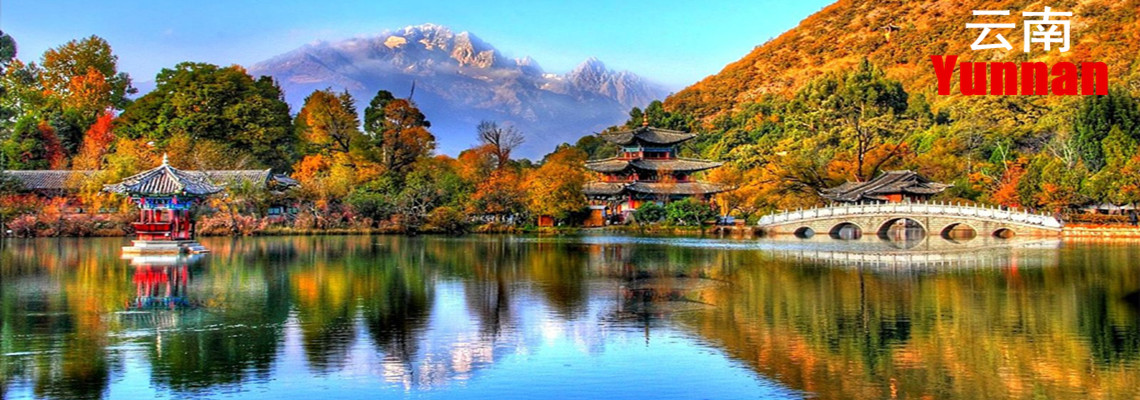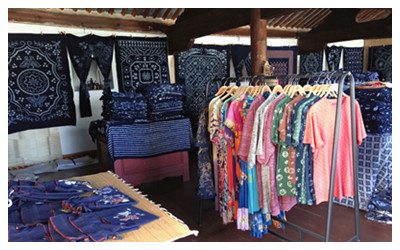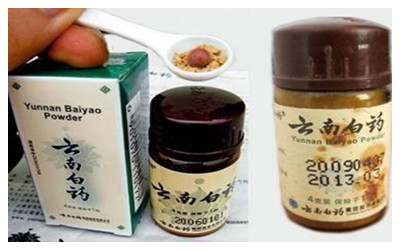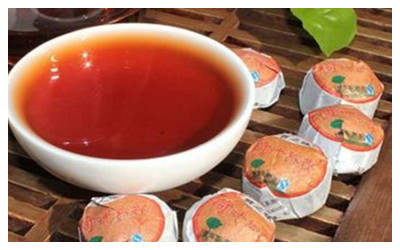Skype: neodalle-travel
Tel: +86 135 7447 2266
E-mail: sales@visitaroundchina.com

 Dai Embroidery:
Dai Embroidery:
Dai Embroidery, also Bai Batik, created by women of the Dai ethnic minority group, is famous for its high level of quality. Almost every Dai woman learns to make embroidery when they are very young, and it is an integral part of their culture. Dai Embroidery is known for its unique patterns, and beautiful and bright colors. Subject matter for the Dai Embroidery varies greatly. Birds, animals, flowers, and the five grains; rice, two kinds of millet, wheat and beans are very popular subject for the embroidery. Each subject has its own meaning and these designs have been passed down for generations.
Dai and Bai Tie Dye:
The Dai and Bai ethnic minority groups are famous for their tie dyed cloth. White cotton cloth is tied and sewn with string, and then dipped into indigo ink. The parts that were tied remain white, while the surrounding cloth is a rich deep blue. The patterns on the Dai tie dye are mainly animals, flowers, dragons and phoenix, and geometric patterns. The cloth is used for many items including; tablecloths, clothing, bags and purses, hats, and even DVD cases. Traditionally indigo dye is used, but recently other colors are more commonly being used.
Wax Printing:
Yunnan Province's many ethnic minority groups have developed a form of printing cloth that is unique. They use wax to make designs in cloth and the results are very beautiful. The designs vary depending on the minority group, but some of the more popular designs are animals, flowers, birds, and landscapes. The dying technique is surprisingly simple. Melted wax is applied to the cloth with a knife. When the wax is cooled, the cloth is dipped into dye. The parts of the cloth with the wax do not accept the dye leaving them bright white. After the cloth is dipped into the dye several times to reach the desired color, the cloth is allowed to dry. When the cloth is dried, the wax is scrapped off and then the cloth is soaked in hot water to make sure all of the wax is removed. The resulting cloth has a beautiful pattern and the cloth can be used for a multitude of uses.
Tengchong Jade:
Jade objects have been crafted in Yunnan for centuries and are sold throughout China and around the world. The jade comes in a large variety of colors, and quality. Jade, being the hardest stone in the world requires many years of apprenticeship before an artisan can create a work of art. Jade cannot actually be carved, it needs to be ground with diamond grit tools. In ancient times, diamond dust was used to grind the items by hand, but now electric tools are used. The jade can be made into many different items. Jade broaches, pendants, earrings, seals, decorative ornaments, chopsticks, and much more can all be found in Yunnan.
Dali Marble:
The ancient city of Dali produces the most famous marble in China. The marble is white with black streaking, which often appears to take on shapes. The marble is used in construction, such as floor tiles, and inlay in furniture. The marble with particularly beautiful patterns are often framed and hung as works of art. The black swirls in the marble can often amazingly look like landscapes, people, or animals. The marble from Dali Ancient City is so famous, that the Chinese word for marble is literally "Dali Stone".
 Yunnan Baiyao (White Medicinal Powder):
Yunnan Baiyao (White Medicinal Powder):
Developed in Kunming by a folk doctor in 1914, the White Medicinal Powder is very famous as a traditional Chinese medicine. The medicine is made from many different medicinal herbs and is said to heal almost any kind of injury. It is believed that the White Medicinal Powder is useful for gunshot and puncture wounds, so every Chinese soldier carries a bottle of the medicine. It is also said to be good for slow healing sores, bug bites, and bleeding stomach ulcers.
Engraved Green Plums:
A traditional and beautiful food of the Bai ethnic minority group, Engraved Green Plums is unique to this area. Besides being delicious and beautiful, they are considered to have medicinal qualities. Dried green plums are engraved with various patterns and designs. The fruit is then soaked in a combination of salt, brown sugar and honey. They can be preserved for many months, and are beautiful combination of a work of art and a delicious snack.
 Puer Tea:
Puer Tea:
One of the most famous teas in China, Puer tea has been produced in Yunnan for centuries. The tea after being picked is dried before being pressed for storage. Traditionally the tea was compressed into a brick shape for easy storage and shipping, but now is pressed into disk, bowl, and mushroom shapes. Yunnan was one end of the famous Ancient Tea Horse Trail, and the tea that was shipped along the trail was all Yunnan Puer. Puer Tea has a rich flavor and aroma and the tea liquor is rich red in color. One reason that Puer Tea has become so popular is that it ages. Like a fine wine, Puer Tea improves with age and older Puer Tea fetches tens of thousands of dollars. Many Chinese people buy Puer Tea as an investment.
 Ask Questions ?
Ask Questions ?